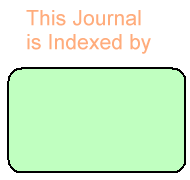Chukwudi T Okonkwo1,
Ifeanyi T Nzekwe2 ![]() ,
Ogbonna Okorie3,
Tochukwu J Okonkwo4,
Chukwuma O Agubata5,
Chukwuemeka C Mbah6,
Charles O Esimone7
,
Ogbonna Okorie3,
Tochukwu J Okonkwo4,
Chukwuma O Agubata5,
Chukwuemeka C Mbah6,
Charles O Esimone7
For correspondence:- Ifeanyi Nzekwe Email: pharmzekwes@gmail.com Tel:+2348066555469
Received: 14 July 2014 Accepted: 21 January 2015 Published: 31 March 2015
Citation: Okonkwo CT, Nzekwe IT, Okorie O, Okonkwo TJ, Agubata CO, Mbah CC, et al. Comparative adsorption of spiramycin on Veegum, activated charcoal and Garcinia kola Heckel (Guttiferea) seed. Trop J Pharm Res 2015; 14(3):379-384 doi: 10.4314/tjpr.v14i3.4
© 2015 The authors.
This is an Open Access article that uses a funding model which does not charge readers or their institutions for access and distributed under the terms of the Creative Commons Attribution License (http://creativecommons.org/licenses/by/4.0) and the Budapest Open Access Initiative (http://www.budapestopenaccessinitiative.org/read), which permit unrestricted use, distribution, and reproduction in any medium, provided the original work is properly credited..
Purpose:To investigate the adsorptive interaction of Garcinia kola with spiramycin, since the kola is widely chewed as a tonic and spiramycin attains high concentrations in saliva.
Methods:Spiramycin solutions of different concentration were added to a fixed mass of Garcinia kola (200 mg), activated charcoal or Veegum®. Shaking was carried out at room temperature after which the dispersion was filtered and the filtrate assayed for residual drug concentration. The process was repeated under different equilibrium conditions of pH and ionic strength. The adsorption data obtained for the three adsorbents were analyzed using Langmuir and Freundlich’s plots.
Results:At neutral pH, drug adsorprtion by Garcinia kola, activated charcoal and Veegum® were 67, 54 and 71 %, respectively; differences in adsorption was not significant (p = 0.09). However, the other two adsorbents exhibited adverse adsorption characteristics in terms of negative adsorption capacity (-5.78 mol.kg-1) and constant (-1141 mol-1L). For each of the adsorbents, pH and ionic strength affected the extent of adsorption, due to their effect on adsorbent surface charge. Correlation with Langmuir and Freundlich relationships were poor, the correlation coefficient for the latter being 0.97, 0.894 and 0.351 for Garcinia kola, Veegum® and activated charcoal, respectively.
Conclusion:The study reveals that Garcinia kola significantly adsorbs spiramycin under alkaline conditions comparable to salivary pH, and therefore should not be taken concurrently with the drug in order to minimize reduction in drug levels.
Archives


News Updates